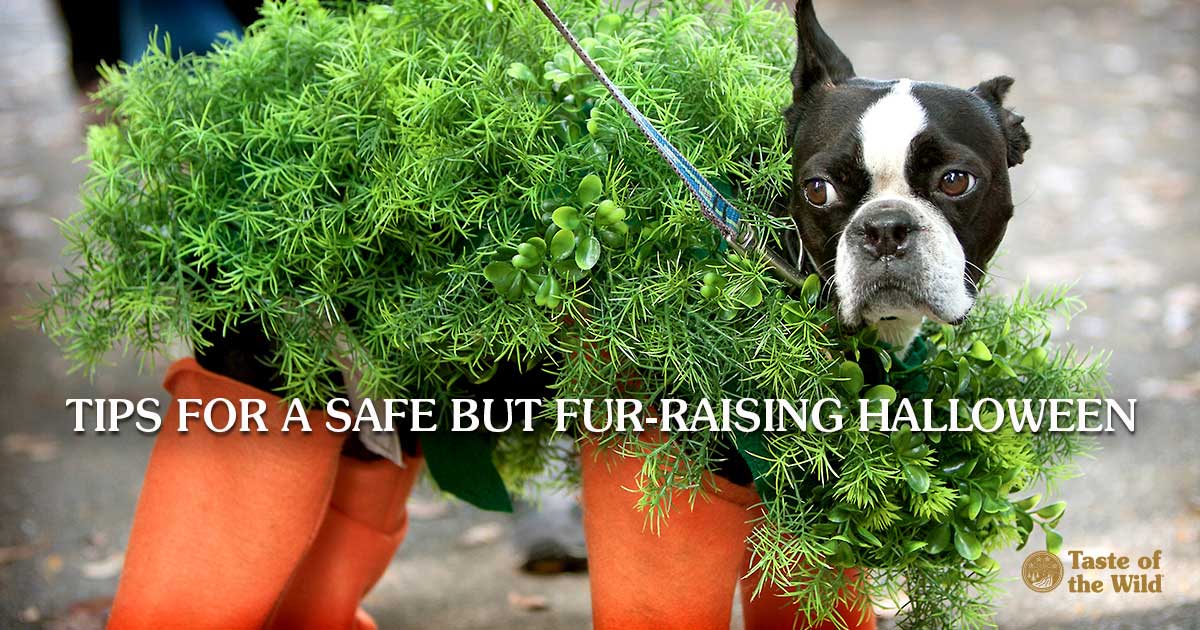
No doubt the mini pirates, robots and superheroes in your house are counting the days to Halloween. But have you made plans for your furry kids? While there’s no reason why most dogs and cats can’t sport a costume as well, a few safety precautions could help prevent something scary from happening to your pet.
CHOOSE COSTUMES CAREFULLY
Some pets will endure any sort of hat, cape or tutu you put on them. Others? Not so much. If your pet’s not feeling the love for their costume, don’t force it.
If your cat is cooperative, make sure the costume doesn’t restrict their movement, cover their eyes or leave them with no opening to go potty. Avoid costumes with sequins or pieces that can be chewed off and swallowed. Never leave a pet unsupervised while they are in costume. It’s better to remove it after you’ve taken photos to prevent your pet from overheating.
DON REFLECTIVE OR FLASHING COLLARS AND LEASHES
Want to take your pet on the trick-or-treating rounds with you? Make sure your cat or dog is visible to cars, pedestrians and little goblins.
HIDE THE CANDY
Full trick-or-treat bags and bowls brimming with sweets can tempt even the most well-behaved pet. But chocolates and sugar-free gum with xylitol can be toxic, especially for dogs. And overindulging in rich foods can lead to vomiting, diarrhea and painful pancreatitis. So keep the goodies out of your pet’s reach.
GUARD THE DOOR
With all the commotion at your front door, it’s easy for a pet to slip outside and get lost. Make sure your pets are wearing current ID tags and have a microchip, which is a permanent form of identification, in case a pet gives you the slip.
MAKE A SAFE PLACE
Do you have a dog that goes into a barking frenzy each time the doorbell rings? Or a cat that hides when you have company? Those pets may appreciate a nice, quiet room away from all the hustle and bustle. Provide them with a comfy bed, plenty of toys and some soothing music so they don’t have to listen to your recordings of creaking doors and cackling witches.
If you have a pet that’s especially afraid of loud noises, talk to your veterinarian about other ways you can help keep him or her calm, including medications.
PROTECT THEM FROM FLAMES
Carved pumpkins make great decorations, but curious pets can singe their whiskers and paws on lit candles. Keep jack-o’-lanterns outside or on tables where pets can’t explore them.
KEEP OUTDOOR CATS INDOORS
Have a cat that likes to venture outside? With more traffic in the neighborhood, it’s safer to keep your cat inside on Halloween. This is especially true for black cats who may be more subjected to neighborhood pranks this time of year.
KEEP HOLIDAY DECORATIONS OUT OF REACH
Many kids like to wear glow jewelry or carry glow sticks. If chewed on, these articles can be toxic and lead to drooling, gagging and vomiting. Dried corn cobs may look festive, too, but if eaten, they can cause digestive tract obstructions, so it’s best to keep them where your pet can’t find them.
With a little planning, Halloween can be a treat for the whole family — including your dog or cat.
The information in this blog has been developed with our veterinarian and is designed to help educate pet parents. If you have questions or concerns about your pet's health or nutrition, please talk with your veterinarian.
